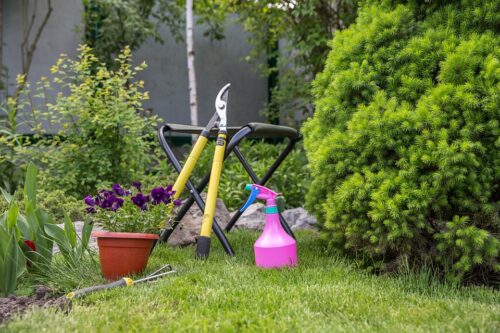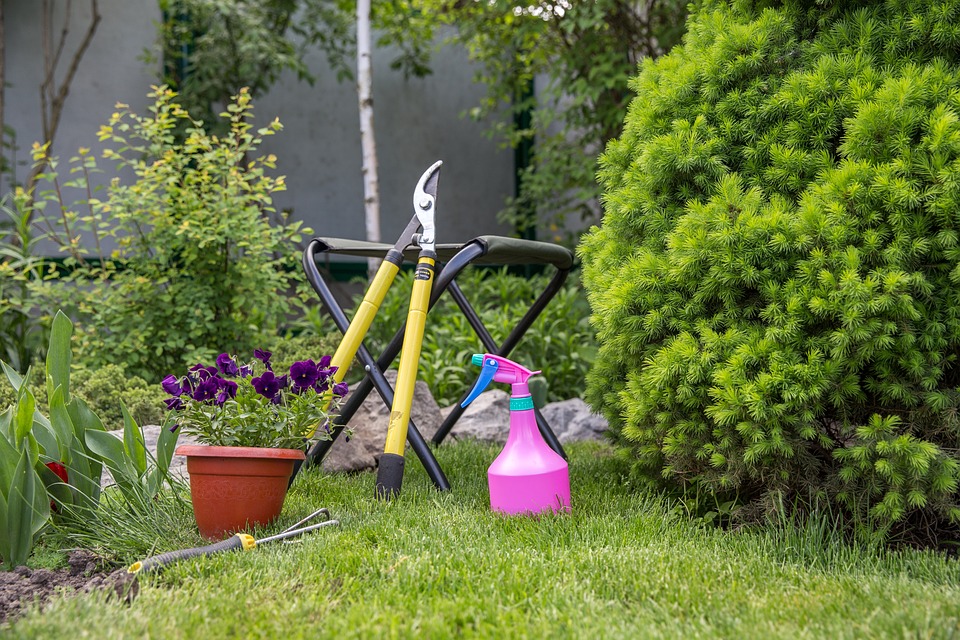Find out What to Do in the Garden in August to create beautiful fall color in your landscape. So read this post and make your to-do list.
Are you confused about what to do in the garden in August? Don’t worry; this post will guide you through the tasks you have to perform in this fall month.
What to Do in the Garden in August

1. Bring Fall Color
Add chrysanthemums to your flower border for beautiful fall colors; you can find them in a range of shapes, colors, and forms. They give a quick impact on planters, pots, or flower borders. The colorful nectar-rich blooms also invite a range of pollinators.
Tip: Blend single and double-flowering varieties with pansies, asters, and other fall cultivars.
2. Repot Houseplants
August is the ideal time to move plants to a new home if you gave houseplants a summer treat outdoors, as new growth emerges during that phase. Repotting in August month helps plants to acclimate to a new planter before the cool climate comes in fall.
Tip: You can go for the soil-less potting mix for your garden as soil structure is not favorable for container culture and can include pests, weed seeds, and diseases.
3. Herb Harvest
The flavor and aroma come at their peak during late summer, just before the plant flowers. Snip leaves in the early morning; you can store them by chopping and freezing them in ice cube trays.
Note: Avoid pruning perennial herbs such as; lavender, sage, oregano, tarragon, and thyme before one month of the last expected frost as it boosts new growth that cannot harden before cold weather.
4. Fall Vegetables
Start growing your fall vegetable garden by planting chard, broccoli, cabbage, lettuce, celery, kale, and collards. Also, try crop rotation to elude re-planting the same variety of veggies in the identical area twice a season in a row. This gardening ritual also helps in preventing soil-borne pests and diseases.
5. Check For Pests & Diseases
Check carefully for any pests and diseases, and remove dead, decaying stems and leaves to prevent fungus or bacteria.
6. Divide Perennial Blooms
You can divide perennial flowers like daylily, hosta, ornamental grasses, Beared iris, and Oriental poppy during August. Take a shovel to lift the plant from the ground without damaging the root ball, cut it into small pieces, and replant it soon in new pots.
7. Replace Annuals
Till late summer, some annual blooms can appear a bit exhausted; transform the pots by planting ready-to-flower cool-season annuals that will shine throughout the fall. Gently pull out the dead blossoms, take fresh soil, and grow new flowers.
8. Weeding Chores
August month is a perfect time for your pending weeding chores in the garden; due to the growing season coming to an end, annuals and perennials begin to produce seeds that sprout in the next spring and become tough to remove. Use a hoe or pull the weeds from the hands; don’t forget to remove the roots.
9. Remember to Fertilize
Fertilizing the plants in the late summer and fall promotes new growth that perhaps won’t last in winter. Skipping fertilizer at this time can make the situation difficult for your plants in freezing temperatures.
Note: If you live in the deep Southern region, then continue feeding your garden plants to encourage blooming through the late fall.
10. Thin Out Strawberries
Strawberries grow fast, and the beds become overcrowded; in August, you can thin out the berries. You have two options: either remove some plants and put them in the compost bin or move them to another bed.
11. Prune the Plants
In August, you can prune both tomatoes and peppers as they’re thriving in full swing. Pruning will promote growth and productivity.
12. Grow Shrubs and Perennials
In most regions, late summer is a suitable time to grow flowering shrubs and perennials. Varieties like daylilies, hydrangeas, sedum. Lilies, peonies, beared iris, and ornamental grasses take root in the cool, moist fall season and blossom in spring and summer. Keep the plants well-hydrated if the climate is dry and hot.
Note: In northern areas, cover the planting with straws or leaves in the first winter; wait till the ground freezes in late fall before covering.
13. Give Some Shade
August can give harsh sunlight and high temperatures, and some varieties of plants require shade from the sun. Tomatoes, melons, lettuce, eggplants, and peppers need shelter from scorching sunlight.
14. Water Wisely
In some regions, August can be a dry month; if you are facing the same situation, then water your plants carefully when there is less rain in your area and hydrate your plants deeply once a week.
15. Harvest Potatoes and Onions
Onions and potatoes can be harvested when the leaves turn brown and fall and stored in well-aerated baskets in a dark room; if exposed to light, the color can become green. You can keep onions in mesh bags and hang them from the ceiling in a cool, dark room.



